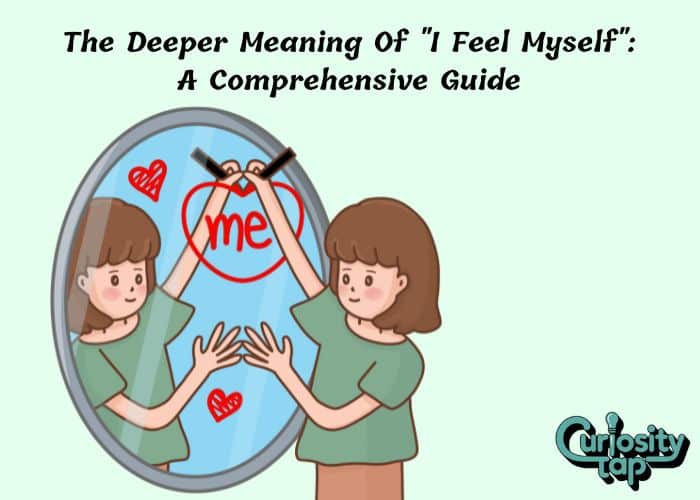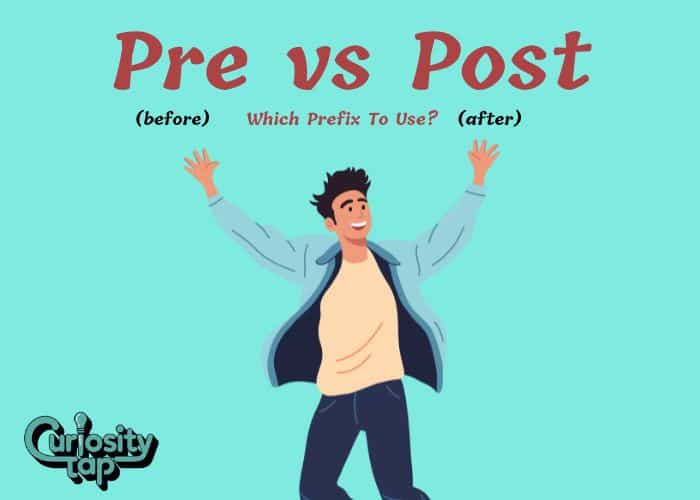Language is a living, breathing entity that evolves with our understanding of human experience. Among the many phrases that capture the essence of self-awareness and emotional intelligence, “I feel myself” stands as a particularly intriguing expression that bridges the gap between literal meaning and figurative expression.
This comprehensive guide explores the multifaceted nature of this phrase, examining its grammatical structure, psychological implications, and practical applications in modern communication.
Understanding the Foundation: What Does “I Feel Myself” Actually Mean?
The phrase “I feel myself” operates on multiple linguistic levels, making it both fascinating and sometimes confusing for language learners and native speakers alike.
At its core, this expression involves a reflexive pronoun construction that can convey various meanings depending on context.
When Sarah says “I feel myself becoming more confident,” she’s describing an internal process of change that she’s actively experiencing. This differs significantly from simply saying “I feel confident,” as it emphasizes the ongoing transformation rather than a static state.
The reflexive nature of the phrase creates a sense of self-observation and introspection that adds depth to the communication.
The grammatical structure follows the pattern of subject (I) + verb (feel) + reflexive pronoun (myself) + additional descriptive elements. This construction allows speakers to express internal experiences with remarkable precision, capturing the nuanced relationship between consciousness and self-perception.
The Psychological Landscape: Self-Awareness Through Language
Emotional Intelligence and Verbal Expression
Self-awareness represents one of the fundamental components of emotional intelligence, and the phrase “I feel myself” serves as a linguistic tool for expressing this awareness.
When Michael tells his therapist, “I feel myself getting anxious before presentations,” he’s demonstrating several key psychological processes:
- Interoception: The ability to perceive internal bodily signals
- Emotional regulation: Recognition of emotional states as they emerge
- Metacognition: Thinking about one’s own thinking processes
- Mindfulness: Present-moment awareness of internal experiences
This level of self-reflection requires what psychologists call “emotional granularity” – the ability to distinguish between different emotional states with precision.
The phrase provides a framework for this distinction, allowing individuals to express complex internal processes that might otherwise remain undefined.
The Role of Mindfulness in Self-Perception
Mindfulness practices have gained significant attention in recent years, and the phrase “I feel myself” aligns perfectly with mindfulness principles.
When practicing meditation or body awareness exercises, individuals often report experiences like “I feel myself settling into stillness” or “I feel myself releasing tension.”
This usage demonstrates how language can support mental health and personal growth by providing specific vocabulary for internal experiences.
The phrase becomes a tool for grounding and present-moment awareness, essential components of effective stress management and emotional well-being.
Contextual Variations: The Many Faces of Self-Expression
Physical Sensations and Bodily Awareness
One of the most straightforward applications of “I feel myself” involves describing physical sensations and bodily changes.
Consider these examples:
- “I feel myself warming up during the exercise routine”
- “I feel myself tensing up when I’m stressed”
- “I feel myself breathing more deeply during yoga”
These statements demonstrate interoception – the body’s ability to sense its internal state. This awareness plays a crucial role in body positivity and self-acceptance, as it encourages individuals to tune into their physical experiences without judgment.
Emotional Transformation and Growth
The phrase excels at capturing emotional transitions and personal development.
When Emma shares, “I feel myself becoming more assertive in my relationships,” she’s describing a process of change that involves both recognition and active participation in her own growth.
This usage supports identity exploration and self-expression, allowing individuals to articulate their evolving sense of self.
The phrase acknowledges that personal growth is an ongoing process rather than a destination, emphasizing the dynamic nature of human development.
The Confidence Connection: Self-Assurance Through Self-Awareness
Building Authentic Self-Confidence
Self-confidence built on self-awareness tends to be more sustainable and authentic than confidence based on external validation. When people say “I’m feeling myself today,” they’re often expressing a genuine connection to their own worth and capabilities.
This colloquial usage, while grammatically different from the reflective “I feel myself,” shares the same underlying principle of self-recognition and self-acceptance.
Both expressions acknowledge the importance of internal validation and personal agency in building confidence.
The Role of Self-Talk in Confidence Building
The way we speak to ourselves profoundly impacts our self-confidence and overall well-being. Using phrases like “I feel myself getting stronger” or “I feel myself handling challenges better” creates positive self-talk patterns that reinforce personal growth and resilience.
Common Usage Patterns and Linguistic Nuances
Correct vs. Incorrect Applications
Understanding when to use “I feel myself” appropriately requires attention to grammatical structure and contextual meaning.
Here’s a helpful comparison:
| Correct Usage | Incorrect Usage | Better Alternative |
|---|---|---|
| “I feel myself becoming tired” | “I feel myself tired” | “I feel tired” |
| “I feel myself growing stronger” | “I feel myself good” | “I feel good” |
| “I feel myself understanding better” | “I feel myself comfortable” | “I feel comfortable” |
The key distinction lies in whether the phrase describes a process of change (correct) or a static state (incorrect). Native speakers naturally understand this distinction, but language learners often struggle with these nuances.
Regional and Cultural Variations
Different English-speaking regions may have varying comfort levels with reflexive constructions. While “I feel myself” is universally understood, some cultures may prefer more direct expressions of internal states.
Understanding these cultural perspectives helps in effective cross-cultural communication.
Practical Applications in Daily Communication
Enhancing Relationship Intimacy
Using “I feel myself” in relationships can deepen intimacy and emotional connection. When David tells his partner, “I feel myself opening up more since we started having these conversations,” he’s sharing not just information but also vulnerability and growth.
This level of emotional transparency requires trust and emotional safety but can significantly strengthen relationship bonds when used appropriately. The phrase invites deeper empathy and understanding between partners.
Professional and Therapeutic Settings
In therapy and counseling settings, “I feel myself” becomes a valuable tool for self-exploration and emotional processing. Therapists often encourage clients to use such language to develop greater self-awareness and emotional regulation skills.
Professional contexts may also benefit from this type of self-reflection, particularly in leadership development and team dynamics. When a manager says, “I feel myself becoming more collaborative in my approach,” they’re modeling personal growth and emotional intelligence.
The Science Behind Self-Awareness and Language
Neurological Foundations
Research in neuroscience reveals that self-awareness activates specific brain regions, including the prefrontal cortex and insula. The act of verbally expressing internal states, as in “I feel myself,” may strengthen these neural pathways, supporting better emotional regulation and self-understanding.
Psychological Benefits
Studies consistently show that individuals with higher self-awareness experience:
- Better emotional regulation
- Improved decision-making abilities
- Enhanced relationship satisfaction
- Reduced anxiety and stress levels
- Greater personal resilience
The phrase “I feel myself” supports these benefits by providing a linguistic framework for developing and expressing self-awareness.
Addressing Common Misconceptions and Mistakes
Mistake #1: Confusing States with Processes
Many people incorrectly use “I feel myself” to describe static states rather than ongoing processes. Remember that this phrase works best when describing transitions and changes rather than fixed conditions.
Mistake #2: Overusing in Casual Conversation
While “I feel myself” is grammatically correct, overusing it in casual conversation can sound awkward or overly formal. Balance is key in natural language usage.
Mistake #3: Ignoring Cultural Context
Different cultural backgrounds may interpret reflexive expressions differently. Being aware of your audience helps ensure effective communication.
Cultivating Self-Awareness Through Mindful Language
Daily Practice Strategies
Developing comfort with “I feel myself” requires practice and mindfulness.
Consider these approaches:
- Journaling: Write about internal experiences using reflexive language
- Meditation: Notice internal changes during mindfulness practice
- Body scanning: Pay attention to physical sensations throughout the day
- Emotional check-ins: Regularly assess and articulate emotional states
Building Emotional Vocabulary
Expanding your emotional vocabulary enhances your ability to use “I feel myself” effectively. The more precisely you can identify internal states, the more meaningful your expressions become.
The Future of Self-Awareness in Communication
Digital Age Considerations
In our increasingly digital world, expressions of self-awareness like “I feel myself” become even more valuable. As social media and online communication sometimes promote superficial interactions, authentic self-expression helps maintain genuine human connection.
Educational Implications
Language learning programs increasingly recognize the importance of teaching emotional intelligence alongside grammatical structure. Understanding phrases like “I feel myself” supports both linguistic competence and personal development.
Integration with Mental Health and Wellness
Therapeutic Applications
Mental health professionals recognize that self-awareness is fundamental to emotional well-being. The phrase “I feel myself” provides clients with a tool for self-exploration and emotional processing, supporting therapy goals and personal growth.
Stress Management and Resilience
When individuals can articulate experiences like “I feel myself getting overwhelmed,” they’re better positioned to implement coping strategies and seek support when needed. This self-awareness contributes to resilience and stress management.
Conclusion: Embracing the Depth of Self-Expression
The phrase “I feel myself” represents more than a simple grammatical construction – it embodies a fundamental human capacity for self-awareness and emotional intelligence.
By understanding its proper usage, psychological implications, and practical applications, we can leverage this expression to enhance our communication, deepen our relationships, and support our personal growth.
Whether you’re a language learner seeking to master English nuances or a native speaker looking to express your internal experiences more precisely, “I feel myself” offers a valuable tool for self-expression and emotional awareness.
The key lies in understanding its contextual meaning, respecting its grammatical structure, and appreciating its role in fostering authentic human connection.
As we continue to navigate an increasingly complex world, the ability to articulate our internal experiences becomes ever more crucial.
“I feel myself” stands as a testament to the power of language to capture the subtleties of human experience, supporting our journey toward greater self-understanding and emotional well-being.
Frequently Asked Questions
What does “feel myself” mean in different contexts?
“Feel myself” can mean different things depending on context. In its reflexive form, it describes self-awareness and internal experiences. In colloquial usage, it often expresses confidence and self-assurance.
Is “I feel myself” grammatically correct?
Yes, “I feel myself” is grammatically correct when describing processes or changes (e.g., “I feel myself improving”). It’s incorrect when describing static states (use “I feel” instead).
How does “I feel myself” differ from “I feel good”?
“I feel myself” describes ongoing processes or self-awareness, while “I feel good” describes a current state. The first emphasizes change and self-observation, the second describes present condition.
Can “I feel myself” be used in mindfulness practice?
Absolutely. “I feel myself” aligns perfectly with mindfulness principles, helping practitioners articulate present-moment awareness and internal experiences during meditation and self-reflection.
What are common mistakes with “I feel myself”?
Common mistakes include using it for static states (incorrect: “I feel myself tired”), overusing it in casual conversation, and forgetting that it should describe processes rather than fixed conditions.
Read more knowledgeable blogs on Curiosity Tap
Is this article helpful?

Jackson Pearson is a passionate educator and language enthusiast behind the blog Jackson Pearson. With years of experience in teaching and writing, he specializes in simplifying complex grammar rules, breaking down tricky vocabulary, and crafting learning guides that are both engaging and practical. His mission is to help readers boost their English skills whether they’re beginners or brushing up for fluency. Through every article, Jackson brings clarity, structure, and a spark of curiosity to the world of English learning.



